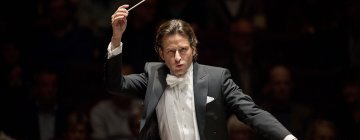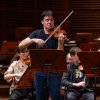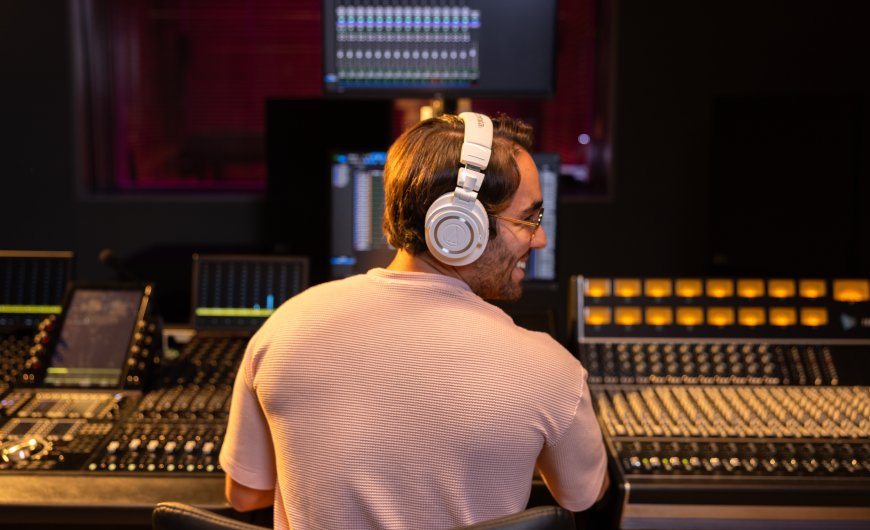
“This program expanded my understanding of filmmaking far beyond music,” said 22-year-old composer Caroline Feitosa.
“I stepped into new roles, leading postproduction sound teams, editing dialogue, collaborating closely with the director on music placement, organizing and engineering a recording session, and rallying my peers to work on this project.”
We’ll meet Feitosa later, but first, what program she is describing?
Musicians through millennia have often been divided into two categories: composers and performers (and on the periphery, a few medieval monks copying scores on parchment in monastic scriptoria).
But in recent decades, many in the world of classical music have acknowledged that the borders have always been more blurred than that, especially when it comes to innovation. Consider the San Francisco Conservatory of Music, where President David H. Stull has called for uniting “a world-class conservatory experience with the aesthetics and tools of 21st-century composition.”
In 2014, SFCM established its Technology and Applied Composition department to enable composers and performers of the future to master film and video game scoring and such newfangled fields of study as augmented and virtual reality technology, sound design, popular music production, artist development, and “other new and evolving musical avenues.”
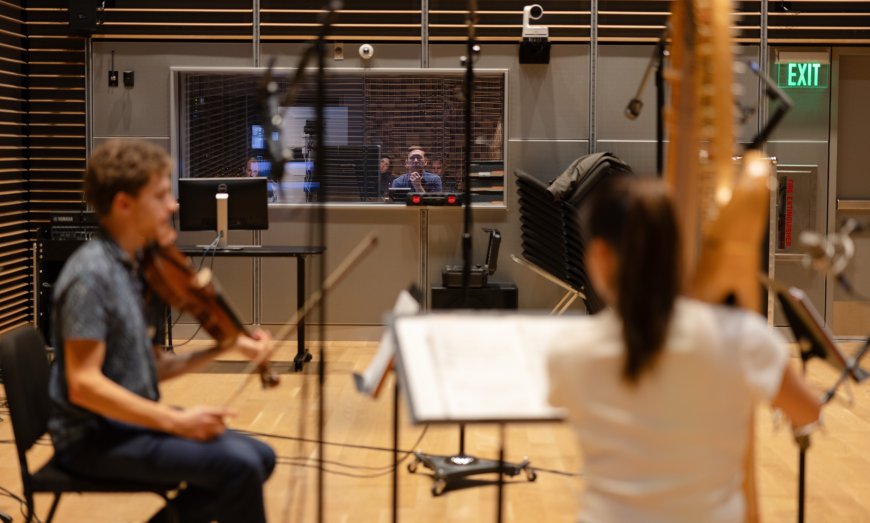
To those ends, TAC, which has also pioneered in welcoming a student population that is more than half women, has developed educational partnerships with Bay Area-based music production companies, including Dolby Laboratories, Sony Music Entertainment, Skywalker Sound, Meyer Sound Laboratories, sE Electronics, and Electronic Arts.
“These commissions, recordings, and innovative projects,” the school reflected in a 2020 announcement, “leverage the favorable economies [for these companies] of being hosted in the educational and production facilities of SFCM.”
Now, reaching out to TAC students, SFFILM’s artist development wing has partnered with SFCM on the Sound and Cinema Fellowship program, providing “an exciting opportunity rarely afforded to independent filmmakers to elevate and deepen the role of music, sound, and image in their projects.”
Since October, 15 TAC students had been working on four independent films that ultimately premiered during this year’s San Francisco International Film Festival, which ran April 17–27.
The results of the collaboration were screened last week at an event that was greeted by TAC Executive Director Steven Horowitz as “a new partnership providing our composers, sound designers, and producers the real-world experience that is so vital.”
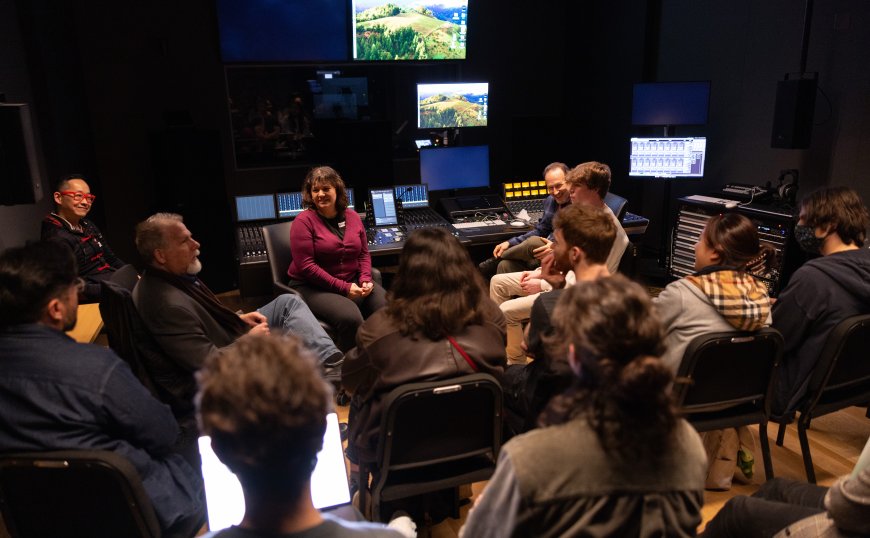
Horowitz continued: “It also ties them into the S.F. arts scene and community in a very direct and powerful way. They get to learn and work alongside amazingly talented filmmakers, and at the same time, the directors get to polish and complete their soundtracks in our state-of-the-art studios alongside our gifted students, each learning from each other.
“The students were able to develop their personal vision for how well-crafted music and sound can enhance the feeling that audiences get from a picture. Some of the [student] composers developed a keen appreciation for the art of sound design. Some of the [student] sound designers learned about the power of a well-placed musical cue.
“From where they started to where they ended up, it has been a joy to see their artistic and professional development as they build their creative networks right here in the Bay Area. And having a premiere as part of the 68th San Francisco International Film Festival is a huge feather in their caps. What an honor to work with such an important local institution.”
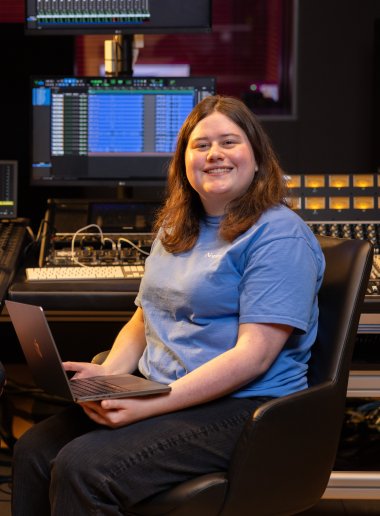
Back to SFCM student Feitosa and her experience of the joint program with SFFILM:
“The film I worked on was America, We Beg Your Pardon by A.K. Sandhu, about Oakland students reviving Black Panther stories in a powerful play, blending history, protest poetry, and youth voices.
“Jonathan Bingham was the lead composer, along with Aaron Pike and Rafe Axne, who wrote cues for the film. I was the supervising sound editor, session producer/engineer, and score mixer. I led the postproduction sound team, organized and engineered the score recording session, and collaborated closely with the director on the final music and sound integration.
“My work was logistical problem-solving, such as coordinating postproduction tasks: who would show up where, booking people, studios, working around schedules.
“The program gave me a firsthand look at the teamwork, leadership, and coordination required across all disciplines to bring a film to life. I’m grateful to my peers for their support, and I leave this experience not just as a composer but as a more informed and versatile storyteller.”
Fellow TAC student Axne is a film composer and sound designer, a current artistic development intern with SFFILM, and the liaison for the inaugural year of the Sound and Cinema Fellowship. He told SF Classical Voice:
“I produced two songs as well as the sound design and full mix for Florencia Manóvil’s film Camino — a heartwarming story about a mother coming to terms with her daughter moving away for college.
“It truly was a blast working with a director who has industry experience. Florencia was able to provide insight on how the film came together and how we could accompany it with the music and sound. The film truly carried itself, so it was important for us not to get in the way, while also supporting the narrative structure of the film.”
Another SFCM student participating in the project was Theo Popov. He said that the experience of being involved “in one of the top film festivals around the world [was] an incredible gift for students.”
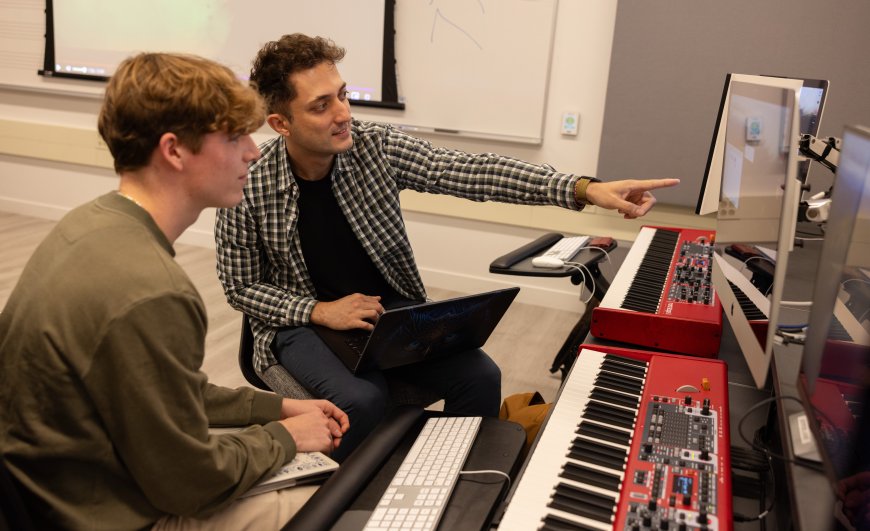
Popov continued: “It’s been a fantastic experience to meticulously work through the entire postproduction process of a film, taking it from a raw audio mix to a polished world of sound, effects, and music.
“Although I’ve been a professional composer for more than a decade, I’ve never before had the chance to do the multiple other aspects of film audio, from dialogue editing to sound design and Foley. It was a very steep learning curve and something I will appreciate having learned how to do long into the future.”
For the filmmakers and student musicians, working together went both ways, Popov explained:
“The directors also learned a fair amount about the audio and music production process from us. For instance, for Camino, we were able to bring the actors into SFCM’s top-of-the-line Studios G and H to record a song for the end credits. It was the first audio recording session that the director and the lead actress had ever been to.
“For our involvement with the Sound and Cinema collaboration, all students received passes to attend unlimited SFFILM Festival events. Over the past week, I’ve had the chance to see some incredible movies from around the world and to meet many of their directors, actors, and composers. I’m starstruck and inspired.”
